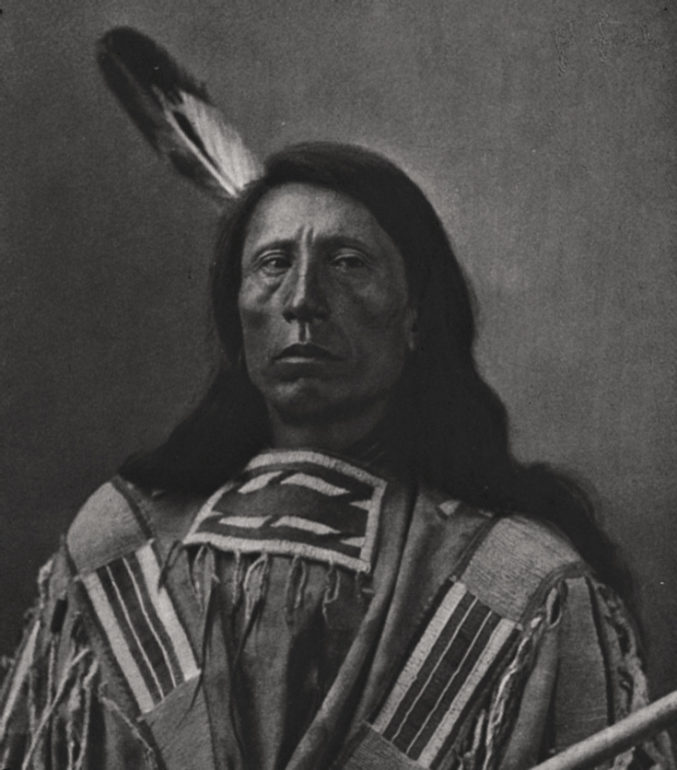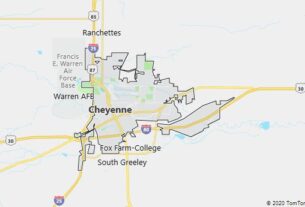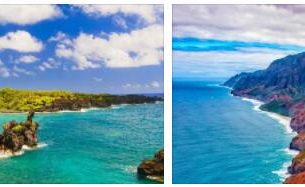Pre-Columbian time
It is not exactly accurate when the first humans immigrated to North America, but recent archaeological, geological and genetic studies indicate that the first ones came across the Beringia land bridge, which is today submerged in the Bering Strait, for between 18,000 and 15,000 years ago. Hunters and collectors then migrated east and south through Canada and the United States. Another immigration route took place along the west coast of North America and probably began 16,000 years ago. The coast was ice-free and rich in whales, seals and fish. Maybe as early as around 12,000 BCE. the entire continent was populated by so-called paleo-Americans.
The so-called Clovis culture dominated in large parts of North America around 10,000–8000 BCE. Characteristic arrowheads have been found to show that these people were big game hunters. In the millennia that followed, the indigenous peoples developed a variety of cultural forms.
The earliest agricultural cultures probably originated in southern Mexico about 7,000 years ago. These spread to the southwestern United States and eventually to the east coast of the United States.
Several Inuit cultures succeeded each other in northern Canada and in Greenland. Eirik Raude discovered Greenland in 985, and in the next few centuries Norwegian and Icelandic immigrants settled in two settlements on the west coast. In the early 1000’s, Norse trips to North America took place, including the area that Eirik Raude’s saga and the Greenland saga refer to as Vinland. Traces of settlements were found on Newfoundland, but these were not of lasting character. About 1100 Inuit immigrants to Greenland from Northern Canada. The northern community in Greenland was at the height of the 13th century, but for unknown reasons was dissolved in the 15th century.
From about 1200 BCE. it began to develop organized civilizations and state formation in Central America. The Olmecs founded small coastal cities in the present Mexican regions of Tabasco and Veracruz around the year 1000 BCE. Olmekerne created face sculptures and developed a calendar. Their community collapsed around 600 BCE.
On the Yucatán Peninsula east and south of the Olmecs area, the Mayan culture developed around the year 600 BCE. At the height of Mayan civilization, about 600–800 AD, it consisted of about 60 small city states. The Mayans had an agricultural culture with the cultivation of maize, beans, pumpkins and tomatoes, and they developed a writing system. For reasons unknown, the Mayan community structure was disintegrating around 900 AD.
Another Mexican civilization built the city of Teotihuacan east of present-day Mexico City, eventually dominating central and southern Mexico from about 200 BCE. to 800 AD This culture, sometimes called the Teotihuacan culture, had a calendar and a pantheon of gods.
After the fall of the Teotihuacans and the Mayans, the interpreters dominated from about 900 to 1100. They had a lasting influence with the development of copper objects. People from the north immigrated in the early 12th century. The interpreter culture was absorbed by the mexica tribe with its center on an island in Lake Texcoco. These were later called Aztecs and made up 2 to 3 million people in the city of Tenochtitlan and the surrounding area. The remains of Tenochtitlan lie beneath Mexico City. The Aztecs lived by agriculture and became a conquest kingdom in the 15th century. Their kingdom was conquered by Spanish conquistador Hernán Cortés in 1521.
In eastern North America, agricultural crops developed around the Ohio and Mississippi rivers. On the Colorado plateau in the southwestern United States, Pueblo Indians built villages of stone and sun-dried clay, partly under rocks far from agricultural lands in valley bottoms.
The so – called pre-Columbian era ceased with Kristoffer Columbus ‘s new discovery and first voyage to North America in 1492.
European conquests
Italian Giovanni Caboto (John Cabot) explored the east coast of later Canada in 1492. Another Italian seafarer, Giovanni da Verrazano, explored North America’s east coast from Florida and probably north to Newfoundland in 1524, while Jacques Cartier sailed up the St. Lawrence River in 1534.
Throughout the 16th century, North America was colonized and conquered by Europeans. Florida was captured by Spaniards in 1516, and in the decades that followed, they discovered Lower California and penetrated from the north coast of the Gulf of Mexico up to Missouri and Ohio. After 1500, immigration to Mexico, Central America and the Caribbean took place. The Viceroy of New Spain (Mexico) was the Spanish Viceroy- ruled Territory of North America from 1535 to 1821.
The first successful English colonies in North America were Jamestown in Virginia from 1607, Bermuda from 1609, and Plymouth in Massachusetts from 1620. The earliest French colonies were Port Royal in Nova Scotia from 1604 and the city of Quebec from 1608. Fur trading became a major business on the continent.. A few decades in the 1600s, it was a Dutch colony around the mouth of the Hudson River (New Amsterdam, later New York ) and a Swedish colony around present-day Philadelphia.
In the Caribbean, plantation operations arose which gave rise to the transport and trade of slaves from West Africa to the Caribbean and eventually also the southern United States.
16th-18th Century
In 1663, the French crown took control of the fur trading companies, and England also took stronger control of its colonies. From 1689 to 1763 a number of colonial wars were fought between the two countries, and at the Paris peace in 1763 France Canada and the Louisiana Territory east of Mississippi surrendered to the United Kingdom. France ceased to exist as a colonial power in North America, and today the small archipelago of St. Pierre et Miquelon off the southern coast of Newfoundland is France’s only remaining possession in North America north of the Caribbean.
The end of the French presence was a disaster for the indigenous peoples of eastern North America, who lost their most important ally to Anglo-American expansion. In 1776, the 13 British colonies formed the United States of America (USA) and disbanded from the United Kingdom. The Indigenous people had unfortunately for them supported the British against the victorious Americans. At the end of the peace in 1783, France regained some islands in the Caribbean. Here, Haiti became North America’s second independent state in 1804.
Spain’s grip on Mexico was weakening. Independence for Mexico was declared by Miguel Hidalgo in 1810, which triggered the Mexican War of Independence. Mexico’s independence was recognized by Spain in 1821. Other parts of Central America also liberated themselves from Spanish rule in the early 1800s.
After independence in 1776, the United States expanded to the west. The country purchased the vast Louisiana territory west of the Mississippi from France in 1803. After the US-UK war in 1812-1816, British and Irish settlement in Canada increased sharply. Texas was an independent republic from 1835 to 1845, but was then incorporated into the United States. This triggered the Mexican-American War from 1846 to 1848 that Mexico lost, and the country had to forgo large areas west of Texas all the way to the Pacific Ocean.
After leaving the Union in 1861, several Southern states formed the Confederate States of America. This triggered the American Civil War in 1861-1865, a bloody settlement that ended with the Union’s (northern states) victory and the abolition of slavery in the United States.
The British colonies in Canada united into a self-governing dominion in 1867, and two years later Canada purchased the large Northwest Territories from the Hudson’s Bay Company. British Columbia entered Canada in 1871 and Prince Edward Island in 1873. Newfoundland became dominion in 1907 and incorporated in Canada in 1949. The United States purchased Alaska from Russia in 1867, and with it the current borders on North America’s mainland were established.
In the 1800s and early 1900s, many Europeans settled in the United States and Canada, including many Norwegians. During the 19th century, the United States developed into a dominant economic, political and military force.
19th Century
As part of the British Empire, Canada joined World War I from 1914 to 1918 and many fell on the European battlefields. The United States joined the war in 1917, while Mexico, which did not participate, was characterized by revolution.
The 1920s were characterized by great economic prosperity in the United States, and to a lesser extent in Canada. But the collapse of the American economy in 1929 and subsequent years of depression went hard over the two countries.
Both Canada and the United States participated in World War II from 1939 to 1945. The devastation in Europe and aid for reconstruction in this continent gave the United States a greater role internationally both politically and economically, and the country became a so-called superpower.
In 1959, the US territories became Hawaii and Alaska states. In the 1960s, colored people achieved full civil rights (see civil rights movement ) and the French-speaking province of Quebec, Canada, was strongly influenced by nationalism. In Cuba (1959) and in Nicaragua (1979) leftist regimes came to power.
In the Caribbean, several areas became independent in the 1960s and later, including Jamaica, the Bahamas, Barbados, Saint Kitts and Nevis, Saint Vincent and the Grenadines, Antigua and Barbuda, Dominica, Saint Lucia and Grenada. In 1979, Greenland gained home rule (internal self-government) and British Honduras became independent as Belize in 1981.
20th Century
A free trade agreement between the US, Mexico and Canada was signed in 1994. The 1990s optimism especially in the US was shaken by the Islamic terrorist attacks against New York and Washington DC in 2001, and warfare in Afghanistan (USA, Canada) and Iraq (USA). were also stresses. In 2006, the drug war in Mexico developed into a deadly conflict.
In the winter of 2007, a financial crisis in the United States triggered a worldwide recession. The following year, Barack Obama was inaugurated as the first African-American president of the United States.
September 11. On the morning of September 11, 2001, two Boeing 767 aircraft crashed into each tower of the World Trade Center in New York. The picture was taken at the dramatic moment just after the second plane hit the south tower at 0903. There were probably around 30,000 people in the two towers during the terrorist attack. The planes struck between the 79th and 95th floors (northern tower) and between the 63rd and 78th floors (south tower), and most of them from here upwards were helplessly lost in the fires that occurred. The image is taken from the paper lexicon Store Norwegian Lexicon, published 2005-2007.





